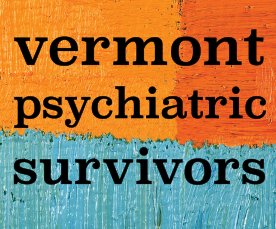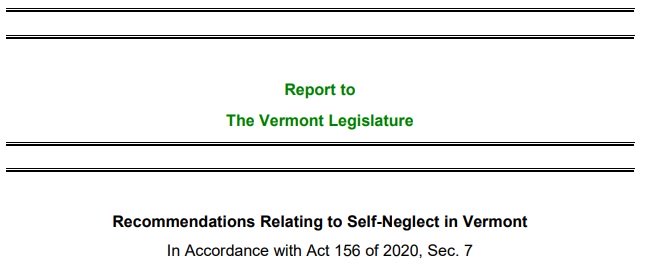The annual number of referrals for self-neglect received by Adult Protective Services (APS), a subdivision of the Vermont Department of Disabilities, Aging, and Independent Living (DAIL), increased by 50% between 2017 and 2021.
The major jump occurred in 2020, when Vermonters informed APS of 417 cases of self-neglect. APS had recorded just 272 such notifications in 2019.
This data appears within a new report delivered to the legislature in July by DAIL in accordance with the Older Vermonters Act (2020), which established a Self-Neglect Working Group. The report notes that Vermont doubtless harbors far more cases of self-neglect than APS has documented, largely because “self-neglecting individuals often experience social isolation that limits exposure and opportunities for reporting by others.”
Moreover, when Vermonters do observe self-neglect, they don’t necessarily call APS, which in fact has “no statutory authority to respond to self-neglect,” as the report points out. Indeed, “Vermont does not have a singular or centralized system for identifying individuals engaged in self-neglecting behaviors.”
By the working group’s judgment, this may be part of the problem.
State law defines self-neglect as “an adult’s inability, due to physical or mental impairment or diminished capacity, to perform essential self-care tasks,” such as obtaining food or managing finances. Vermont’s Area Agencies on Aging, a network of five publicly subsidized nonprofits, assess and aid individuals engaged in self-neglect in cases where the individual is 60 or older, but the state has not allocated any dedicated funding to support self-neglecting 18-to-59-year-olds.
These cases nevertheless end up within the purview of the Agency of Human Services (AHS). AHS Field Service Directors do not work directly with these adults but take steps to connect them with mental health services, addiction recovery resources, housing assistance, or medical care.
One of the report’s six recommendations is for the state to issue a request for proposals with the aim of contracting an organization to provide direct services to self-neglecting individuals below age 60.
The other recommendations focus on standardization: developing a single statewide process for referrals, a universal screening tool for self-neglect, and shared training courses for providers. A single entity would oversee the whole system and collect data from each service provider.
The most important part of the puzzle appears to be money. “The Working Group has determined that Vermont cannot meaningfully improve its response to self-neglect without directing additional resources to that end,” the report concludes.
This verdict refers not just to an absence of funds with which to contract a service provider that would address self-neglect among younger adults but also to “insufficient” current funding for the Area Agencies on Aging.
The report observes, for instance, that, in other states, “agencies responding to self-neglect have discretionary funds to use to resolve urgent client needs – from the paying of an electricity bill to the cleanup/sanitization of a home. We recommend that [Vermont’s] agencies/organizations designated to respond to self-neglect be provided with discretionary funds to address urgent client needs, as well. Sometimes the application of discretionary funds can prevent a potentially-resource-intensive circumstance from ballooning.”

